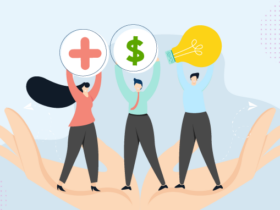In today’s environment, digital accessibility implies that anybody, regardless of technical ability or physical restrictions, may use the accessible resources. Few, if any, people have a consistent way of dealing with digital media. Some individuals avoid them. People with learning difficulties require less information than people with vision impairments.
What’s the Point?
There are several strong reasons to make digital information widely accessible. People with disabilities may now have more options than ever to assist them in learning to use technology. As a result, digital content and services may become more broadly available. People with all types of disabilities benefit from advancements in digital accessibility. Impaired vision, hearing, and mobility are all possible side effects.
Benefits of Being Available to a Large Number of People
Others who do not have visual impairments may benefit from technology as well. It may, for example, make it easier for the elderly to use various devices. Those who do not speak English as a first language may have an easier time accessing the Internet and other digital tools.
QualityLogic is a corporation that assists with internet connections. With their assistance, your program will be put to the test, gaps will be uncovered, and information will be improved to make it more accessible to everyone. There’s also the added benefit of increasing brand recognition and, as a result, customer base.
Creating Useful Goods and Services
Internet research has various advantages. If it is successful, it may help businesses reach a larger audience. By making your digital goods and services easily accessible, you may attract an extensive consumer base in need of support. Differentiating oneself in one’s area or at work may also be done through the use of unique tactics. Many people who were previously unable to make use of your company’s advantages may now be able to do so as a result of this support and access.
Creating New Media Files
Don’t ramble; go to the point. This argument may appear obvious, yet it needs repeating. One way to do this is to avoid jargon and talk in a direct manner. Make many versions of your information, including audio and video, in case any of your consumers prefer a certain media.
Increase the Effectiveness of Your Media
Add pictures to your content, such as photos and videos, to make it more interesting and simple to read. These issues, however, may be mitigated if the right software is employed. Text descriptions should be supplied to those who are unable to view pictures or videos. Check that folks with low vision can view the photographs and videos you make.
When Designing the Layout, Keep Accessibility in Mind
The Web Content Accessibility Guidelines (WCAG) 2.0 are just one of numerous standards and regulations requiring accessible digital information. WCAG 2.0 is a well-established collection of guidelines and recommendations. These sorts of laws and processes are being adopted by an increasing number of nations. Keeping up with the latest advancements is critical for ensuring that your goods and services continue to meet requirements. QualityLogic can assist you in meeting these criteria by subjecting your software to WCAG compliance testing, which includes automated, manual, and remedial tests.
Why Are the Benefits of Digital Access Important?
“Disability is an umbrella term that includes impairments, activity constraints, and participation restraints,” according to the World Health Organization. Body, sense, thought, cognitive, and behavior issues can all contribute to incapacity. Being one of the world’s most common diseases, it might affect a billion people. Despite this, persons with disabilities may have challenges in obtaining a job or finishing their education.
To overcome these concerns, widespread access to digital products and services is required. Websites and mobile applications are designed to meet the requirements of persons with visual, auditory, cognitive, and intellectual disabilities. We can help people with disabilities overcome some of the challenges they face and live full, inclusive lives by making digital information and services more accessible.
The Internet and Persons With Disabilities
Access to digital information can be difficult for people with a variety of disabilities. A text-to-audio conversion service may be useful for those who are blind or have visual impairments. Deaf and hard-of-hearing people may require captions or transcripts to interact with any form of media properly. Individuals with cognitive limitations may benefit from information simplification. For persons with physical limitations, additional input devices like switches or eye-gaze sensors may be required to view the material. Keeping these diverse standards in mind, website designers and developers may make their digital material more approachable to a larger audience.
Remember to Include the Blind in Your Designs
It’s important to realize that while working with digital data, there’s little room for direct engagement with the actual world. Some people, such as those who are blind or have poor vision, require a large number of visual cues to grasp what is going on. As a result, various safety precautions must be considered while developing digital entertainment for children. For example, there must be corresponding text for each image. Captions must be included in the video and audio explanations. You can make your digital data open to everyone if you follow these criteria.
Addressing the Deaf’s Needs
While creating digital material, it is critical to consider the preferences of a diverse audience. Conventional content may be difficult to comprehend for persons with special needs. Closed captioning allows those who are deaf or hard of hearing to view digital material.
There are a few things to consider when creating digital content with closed captions. It all boils down to how understandable the captions are. This includes things like using larger letter sizes and avoiding difficult-to-read fonts. It is also critical to sync the subtitles and audio. You can use automated subtitle-generation tools or manually transcribe the audio track to do this. It is critical to check the captions for correctness.
If you follow these principles, individuals of all abilities will be able to access your digital information. Closed captions, which make information more accessible to those with hearing and/or vision problems, are one approach to this. There are also audio explanations and sign language interpreters available. By delivering digital content, you can address the demands of all of your clients.
Making Assistive Devices for the Mentally Handicapped
When creating digital content for people with cognitive disabilities, several factors should be taken into account. Keep in mind that because of their uniqueness, each individual needs a tailored plan. Yet, data accessibility can be increased if certain circumstances are satisfied.
Programs geared at the disabled, for example, frequently emphasize the use of specific examples and images. As a result, the reader has easier access to the material. Arguments and criticism require several sources. Allowing students to interact with the content in their own unique way enhances the probability that they will learn and retain it. Designers may utilize these concepts to create digital educational content that can be used globally.
If you want to learn more about how QualityLogic can make your business more accessible online, go to www.qualitylogic.com. Throughout the last 30 years, they have assisted clients in a variety of sectors such as eCommerce and marketing, and they can start you on the correct road as well.







